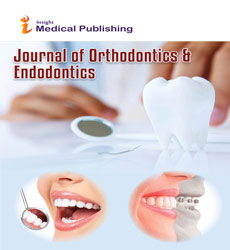Dentures: A Overview
Sravani Gaddam
DOI10.36648/2469-2980.21.7.37
These dentures require fewer visits to make and usually are made for older patients, patients who would have difficulty adjusting to new dentures, would like a spare pair of dentures or like the aesthetics of their dentures already. This requires taking an impression of the patients current denture and remaking them. As early as the 7th century BC, Etruscans in northern Italy made partial dentures out of human or other animal teeth fastened together with gold bands. The Romans had likely borrowed this technique by the 5th century BC.
Wooden full dentures were invented in Japan around the early 16th century. Softened bees wax was inserted into the patient's mouth to create an impression, which was then filled with harder bees wax. Wooden dentures were then meticulously carved based on that model. The earliest of these dentures were entirely wooden, but later versions used natural human teeth or sculpted parodies, ivory, or animal horn for the teeth. These dentures were built with a broad base, exploiting the principles of adhesion to stay in place. This was an advanced technique for the era; it would not be replicated in the West until the late 18th century. Wooden dentures continued to be used in Japan until the Opening of Japan to the West in the 19th century.
In 1728, Pierre Fauchard described the construction of dentures using a metal frame and teeth sculpted from animal bone. The first porcelain dentures were made around 1770 by Alexis Duchâteau. In 1791, the first British patent was granted to Nicholas Dubois De Chemant, previous assistant to Duchateau, for 'De Chemant's Specifications’ composition for the purpose of making of artificial teeth either single double or in rows or in complete sets, and also springs for fastening or affixing the same in a more easy and effectual manner than any hitherto discovered which said teeth may be made of any shade or colour, which they will retain for any length of time and will consequently more perfectly resemble the natural teeth. He began selling his wares in 1792, with most of his porcelain paste supplied by Wedgwood. 17th century London's Peter de la Roche is believed to be one of the first 'operators for the teeth', men who advertised themselves as specialists in dental work. They were often professional goldsmiths, ivory turners or students of barber-surgeons.
Types
Removable partial dentures
Removable partial dentures are for patients who are missing some of their teeth on a particular arch. Fixed partial dentures, also known as "crown and bridge" dentures, are made from crowns that are fitted on the remaining teeth. They act as abutments and pontics and are made from materials resembling the missing teeth. Fixed bridges are more expensive than removable appliances but are more stable.
Complete dentures
Complete dentures are worn by patients who are missing all of the teeth in a single arch—i.e., the maxillary (upper) or mandibular (lower) arch—or, more commonly, in both arches.
Copy denture
Can be made for either partial, but mainly complete denture patients.
Medical uses
Dentures do not feel like real teeth, nor do they function like real teeth. Dentures can help people through Mastication or chewing ability is improved by replacing edentulous areas with denture teeth. Aesthetics because the presence of teeth gives a natural appearance to the face, and wearing a denture to replace missing teeth provides support for the lips and cheeks and corrects the collapsed appearance that results from the loss of teeth. Pronunciation, because replacing missing teeth, especially the anteriors, enables patients to speak better. There is especially improvement in pronouncing words containing sibilants or fricatives.
Complications
Stomatitis Denture stomatitis is an inflammatory condition of the skin underthe dentures. It can affect both partial and complete denture wearers, and is most commonly seen on the palatal mucosa. Clinically it appears as simple localized inflammation (Type 1), generalized erythema covering the denture-bearing area (Type II) and inflammatory papillary hyperplasia (Type III). People with denture stomatitis are more likely to have angular cheilitis. Denture stomatitis is caused by a mixed infection of Candida albicans (90%) and a number of bacteria like Staphylococcus and Streptococcus
Ulceration
mouth ulceration is the most common lesions in people with dentures. It can be caused by repetitive minor trauma like poorly fitting dentures including over-extension of a denture. Pressure indicating paste can used to check the fitting of dentures. It allows the areas of premature contact to be distinguished from areas of physiologic tissue contact. Therefore, Advice the person to use warm salt water mouth rinses and a betamethasone rinse can heal ulcer. Review of persisting oral ulcerations for more than 3 weeks is recommended.
Open Access Journals
- Aquaculture & Veterinary Science
- Chemistry & Chemical Sciences
- Clinical Sciences
- Engineering
- General Science
- Genetics & Molecular Biology
- Health Care & Nursing
- Immunology & Microbiology
- Materials Science
- Mathematics & Physics
- Medical Sciences
- Neurology & Psychiatry
- Oncology & Cancer Science
- Pharmaceutical Sciences
